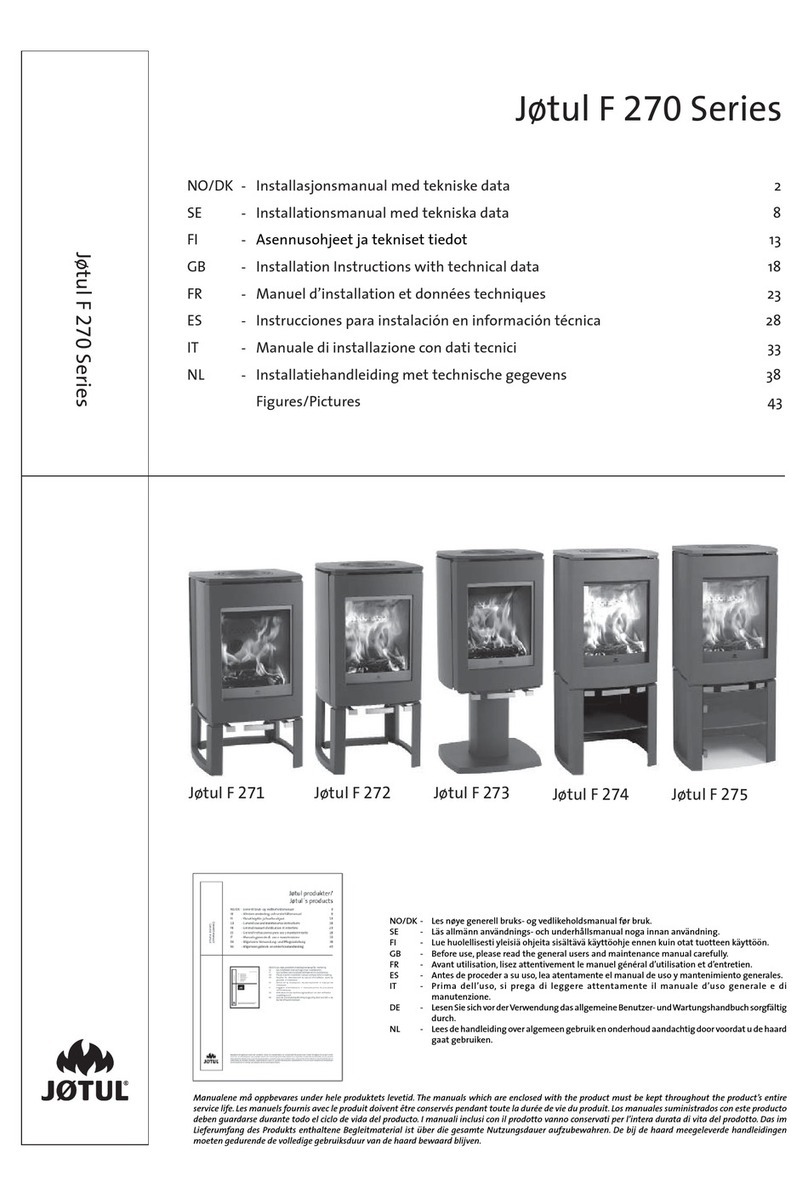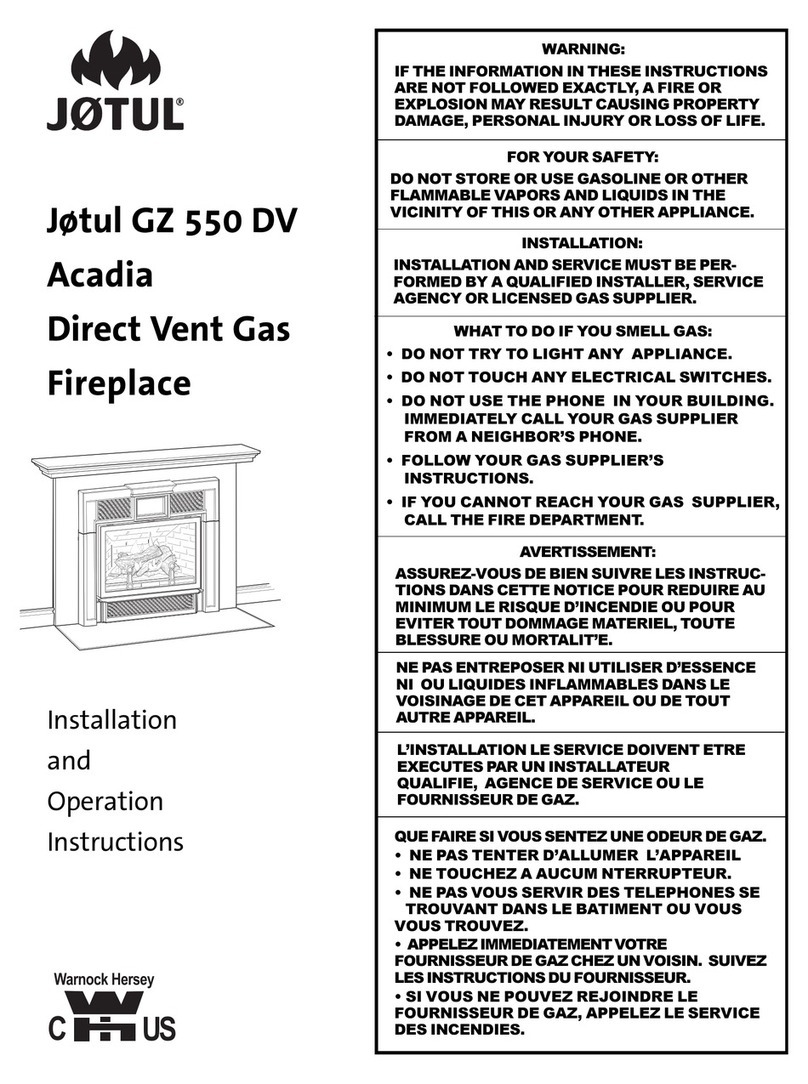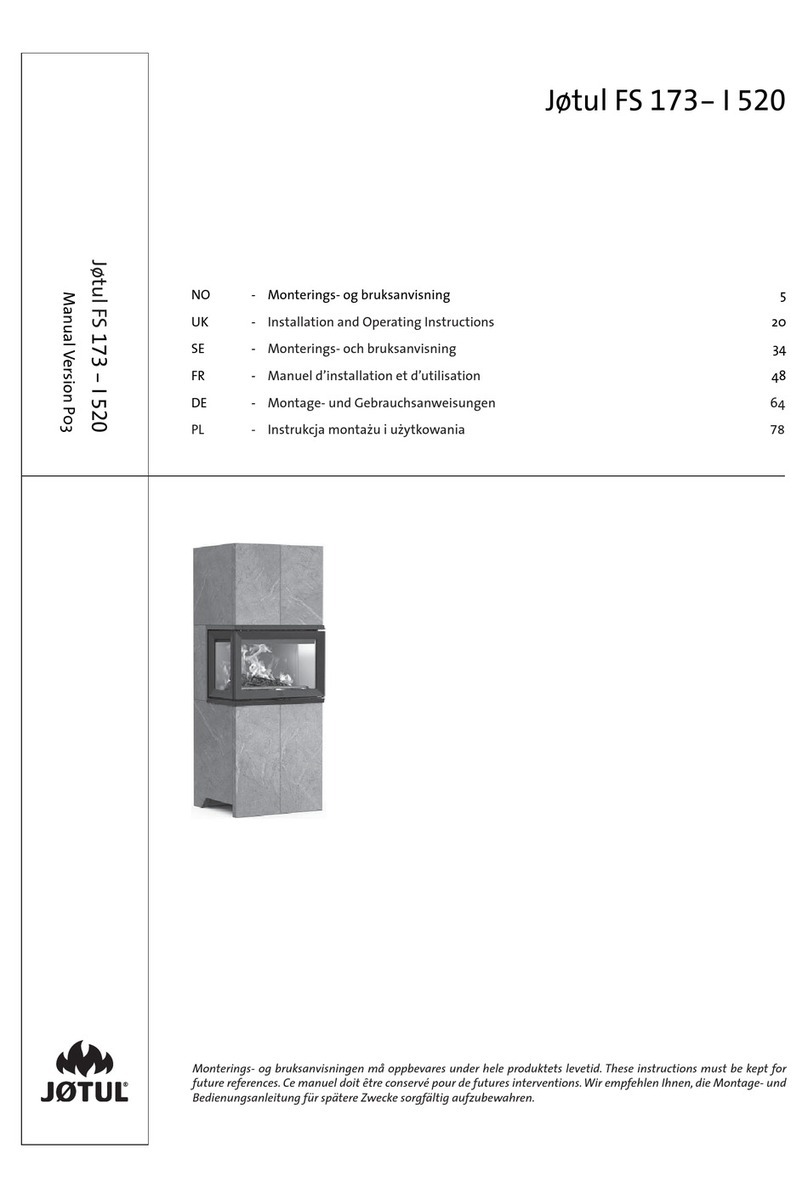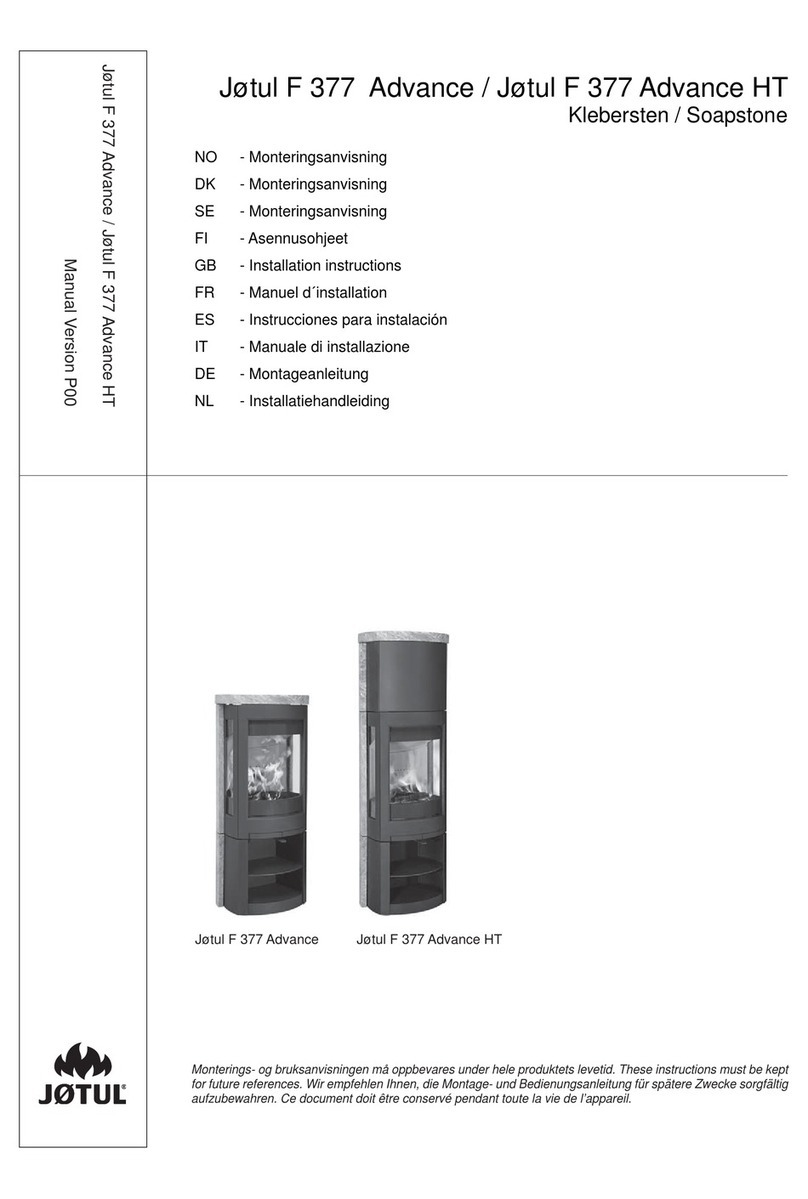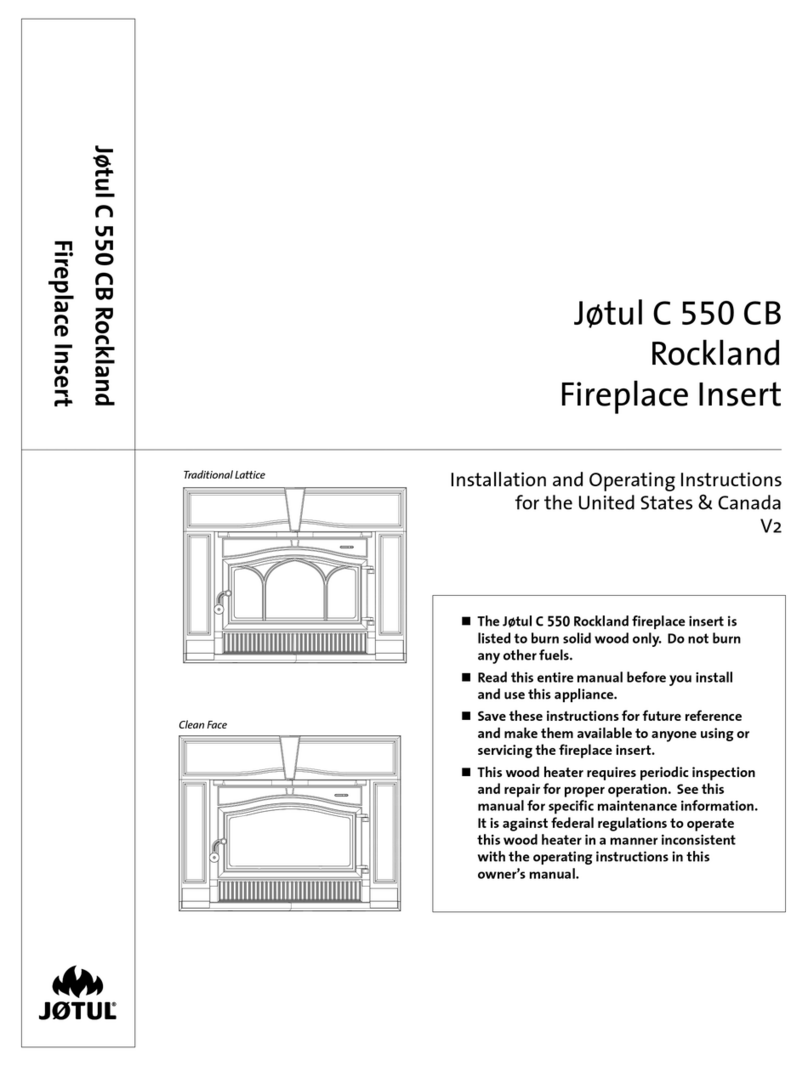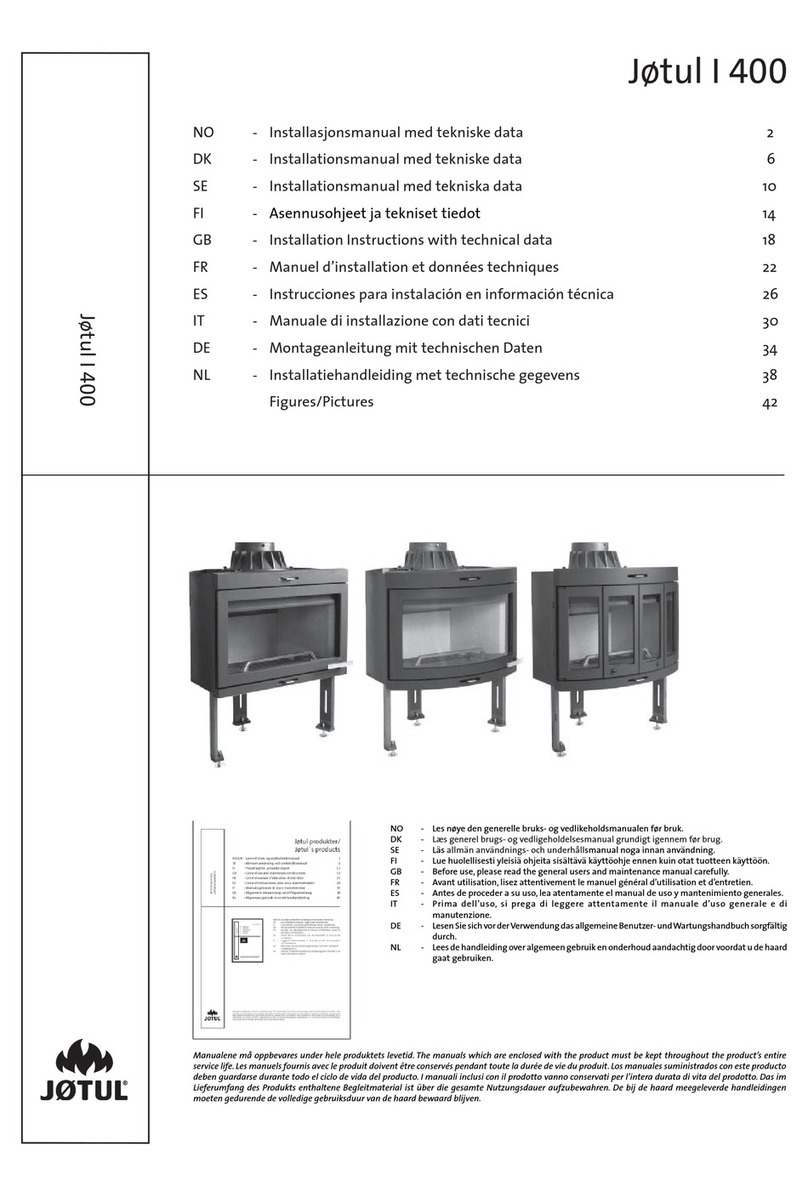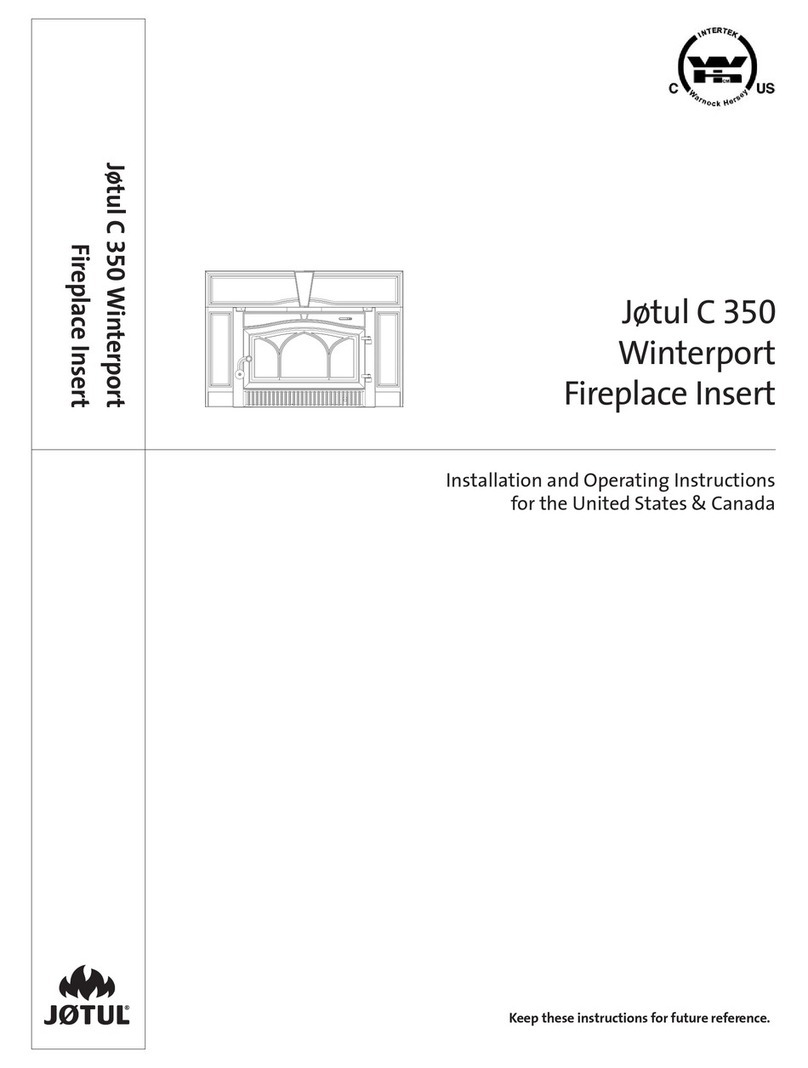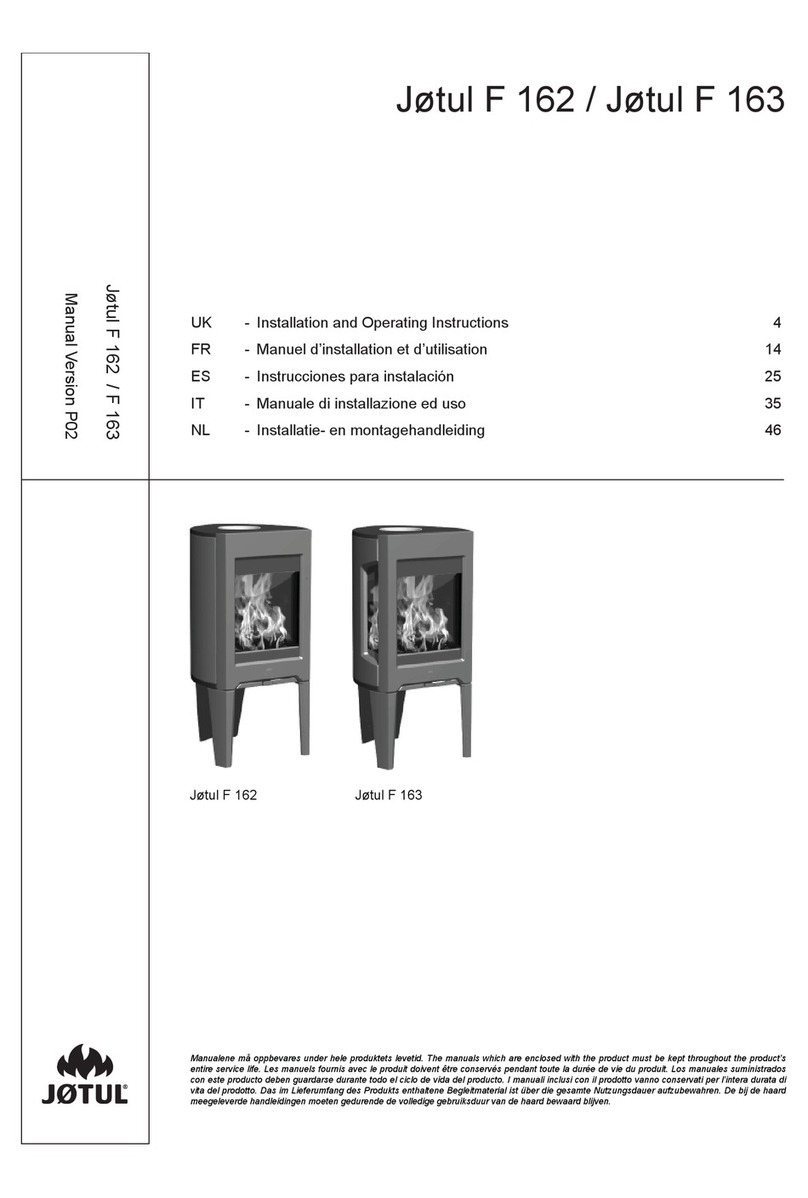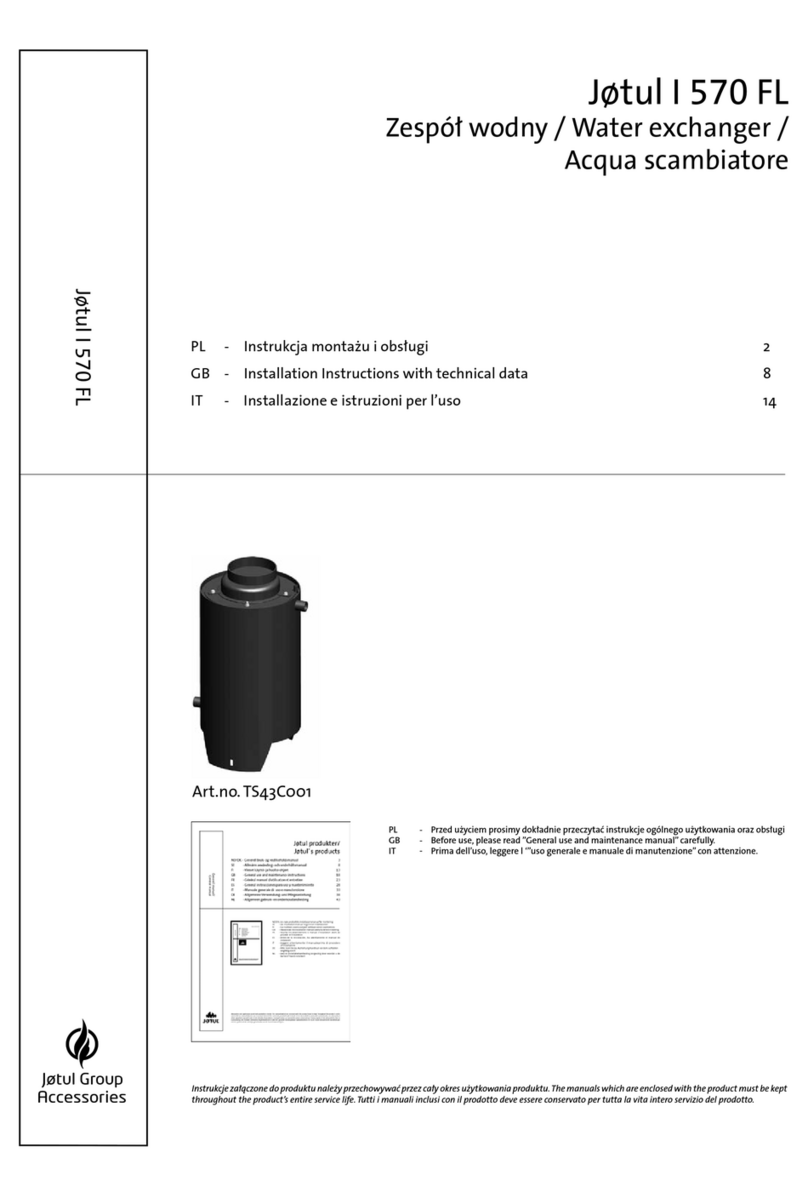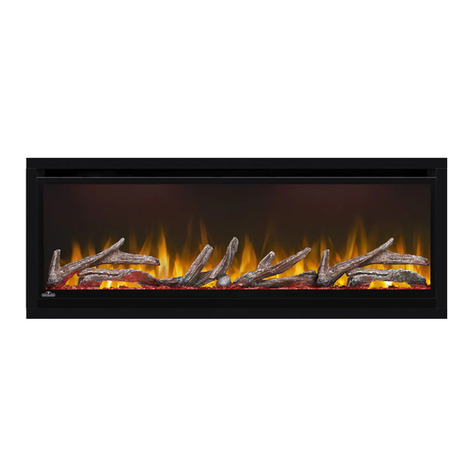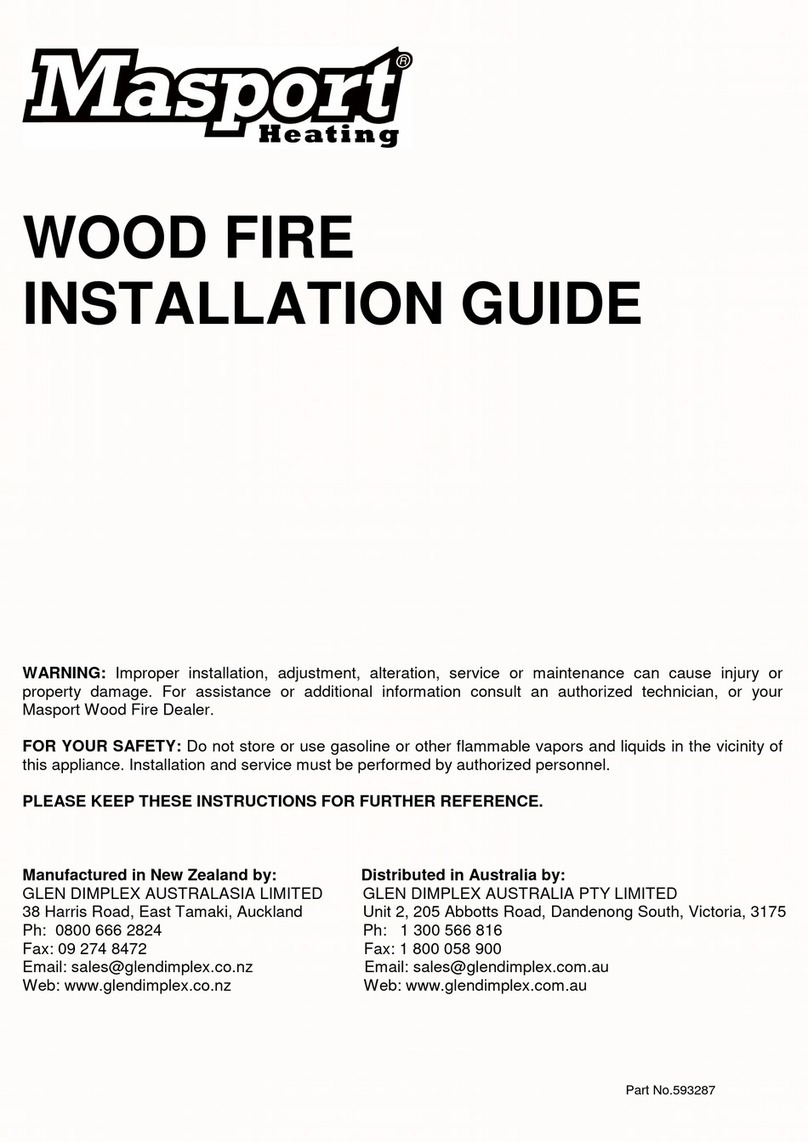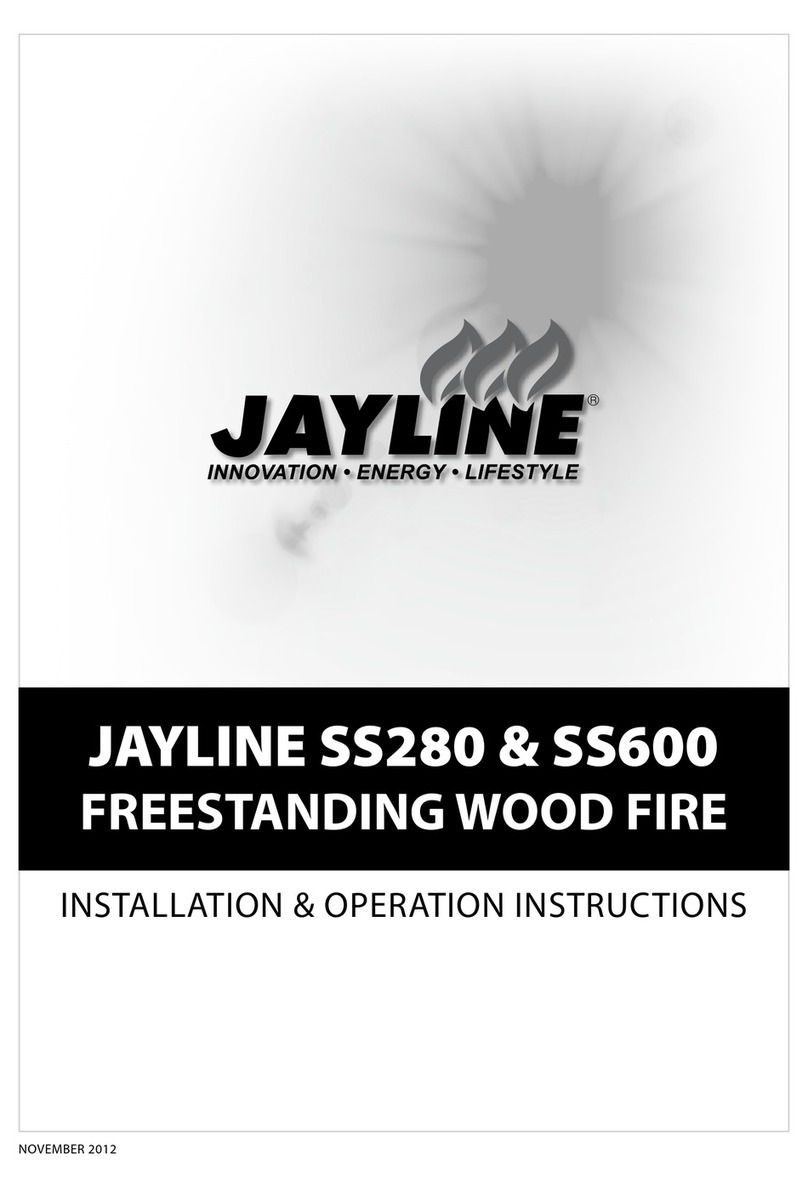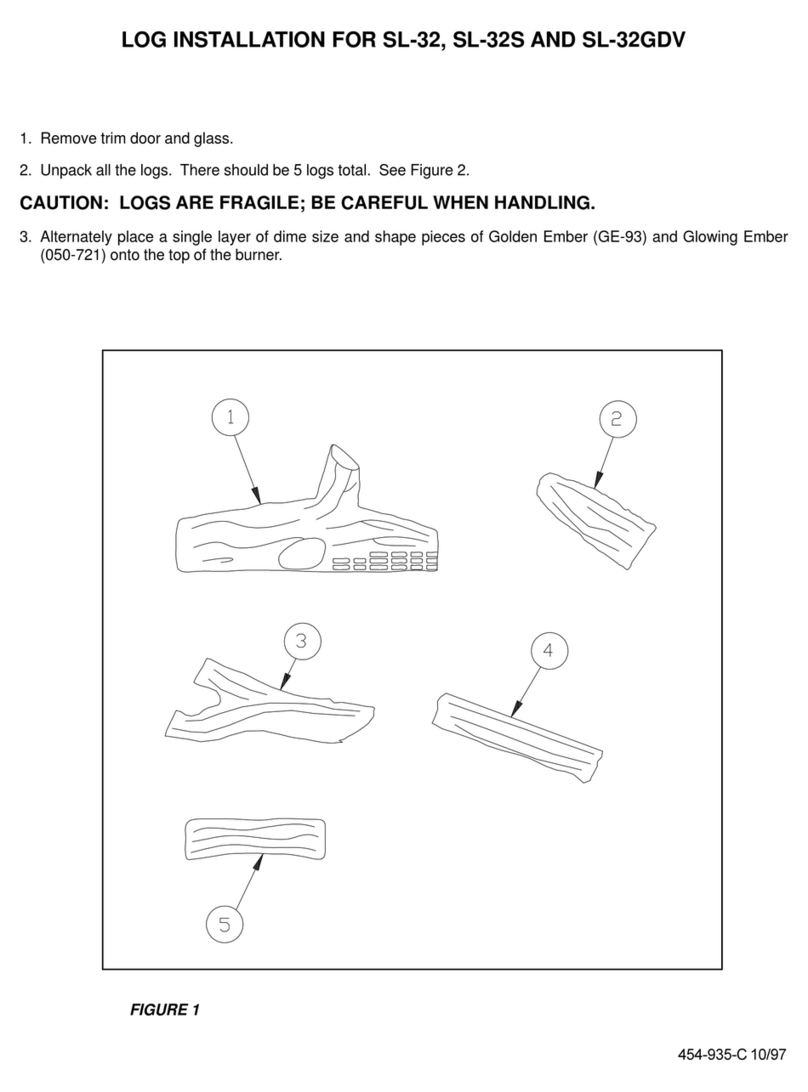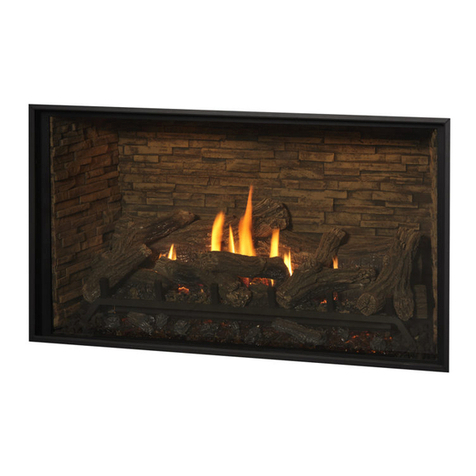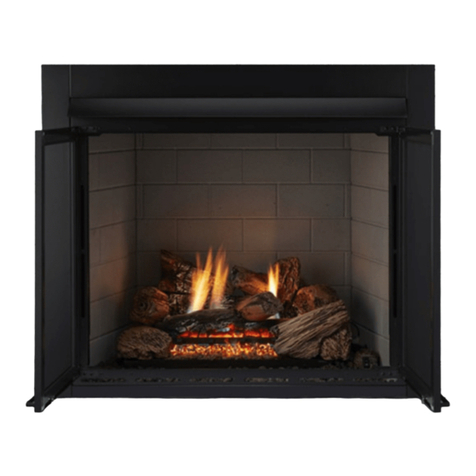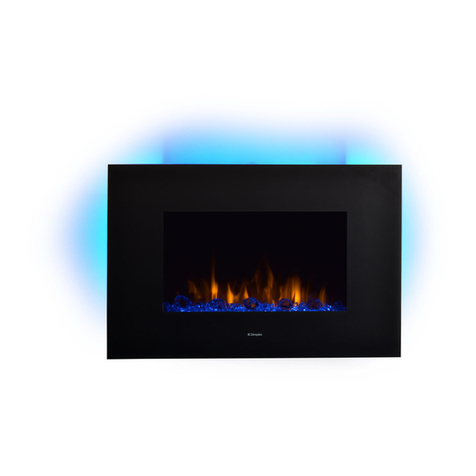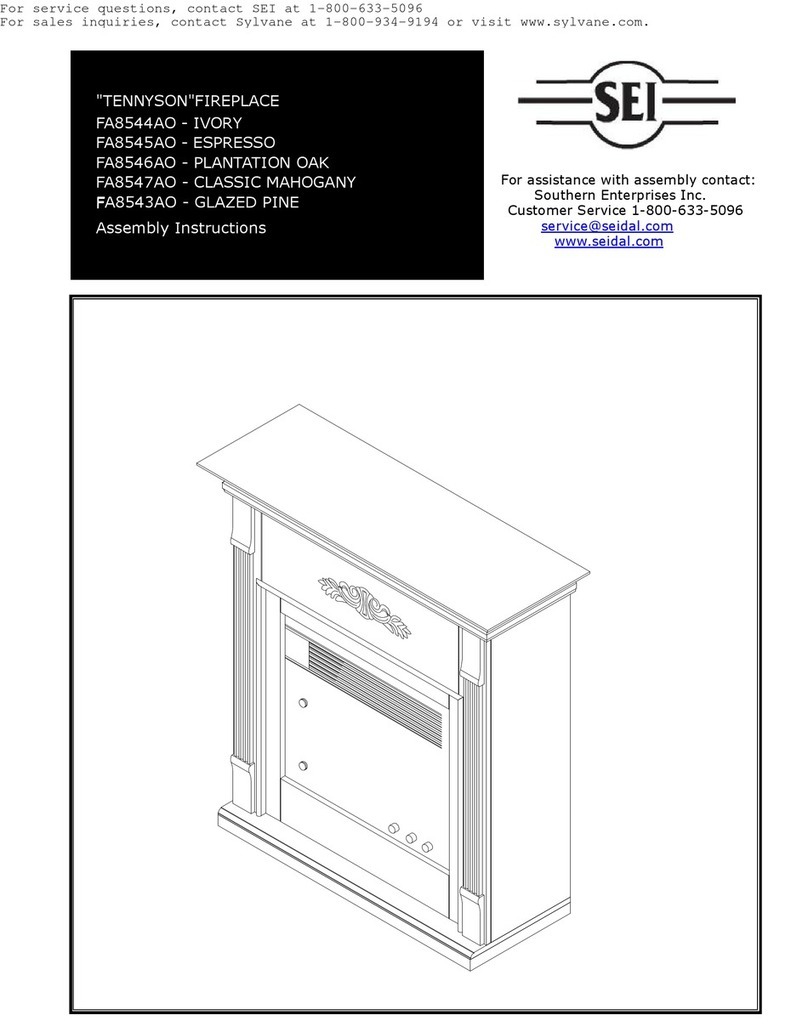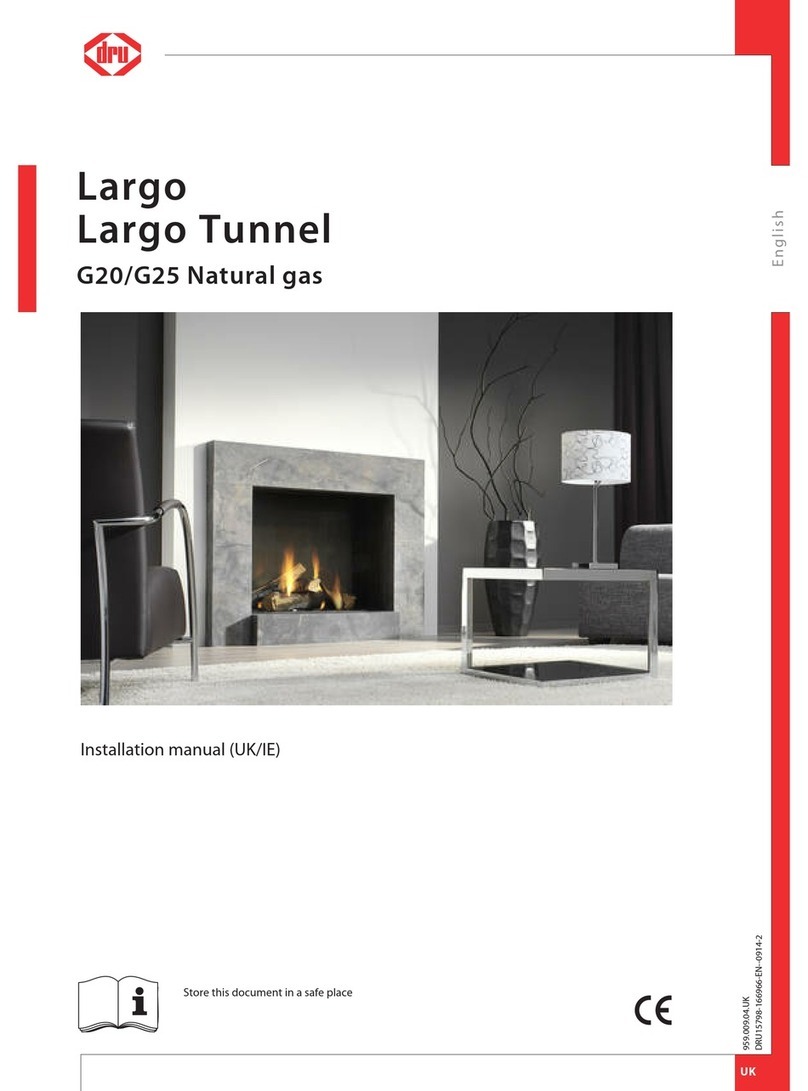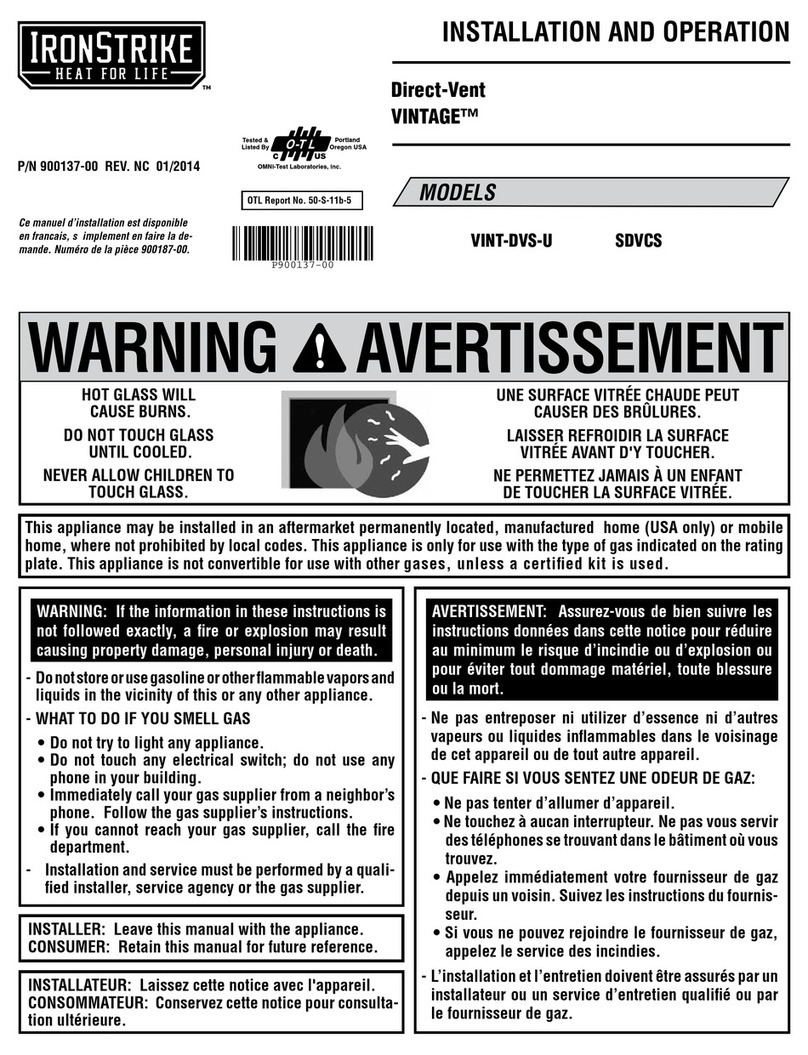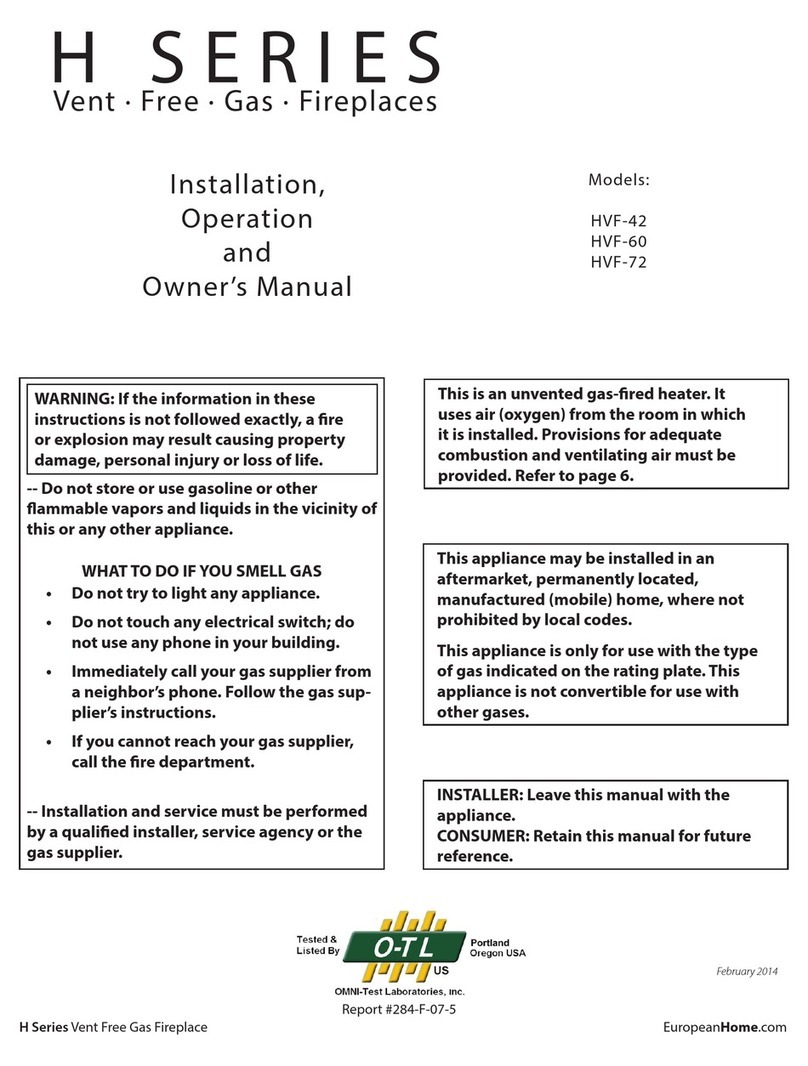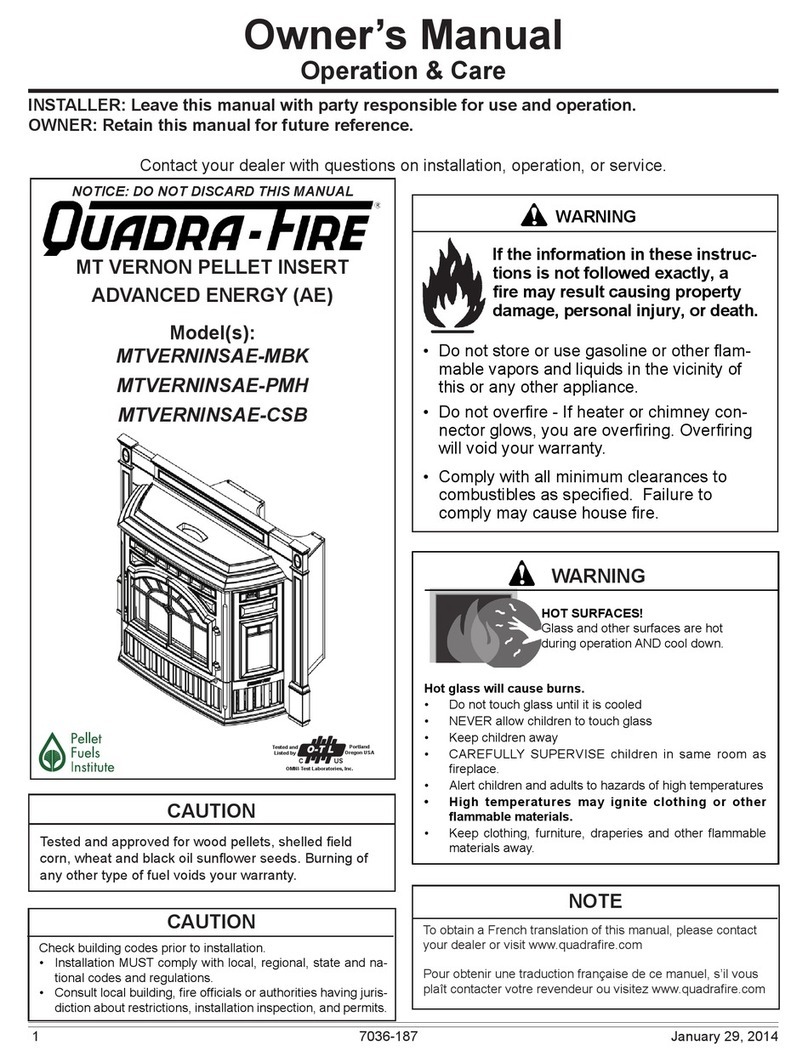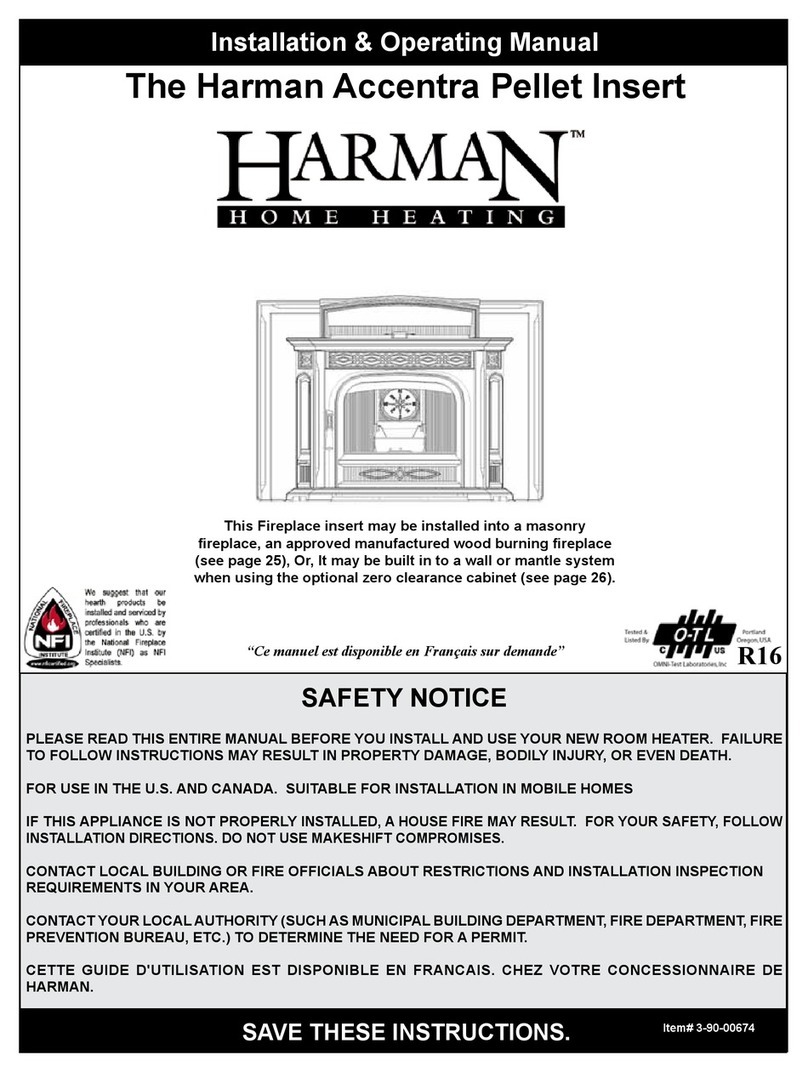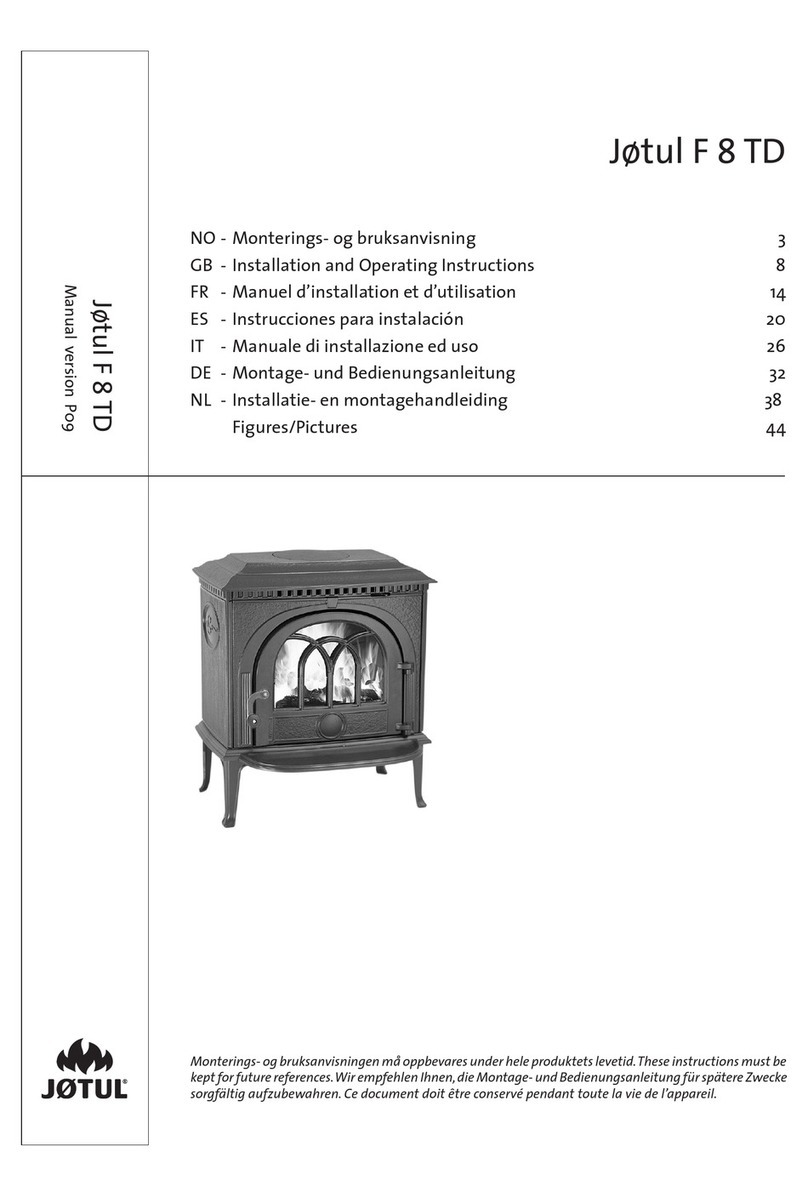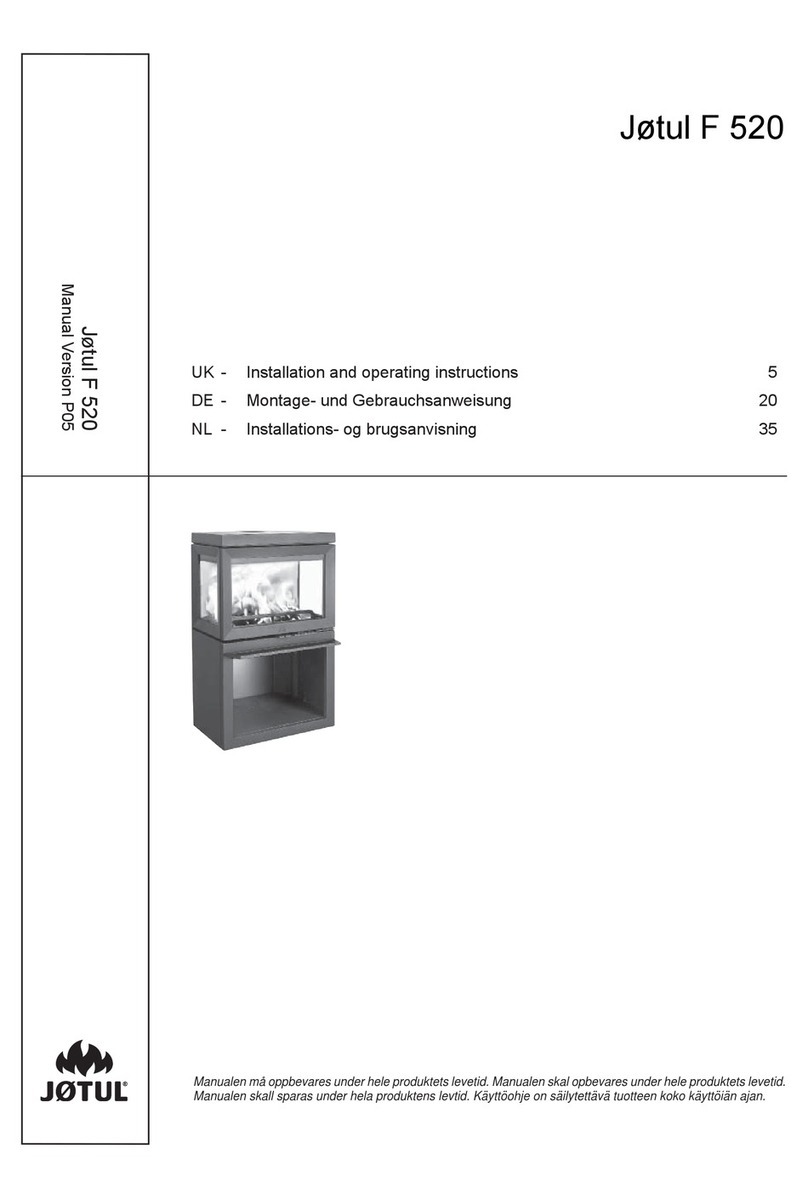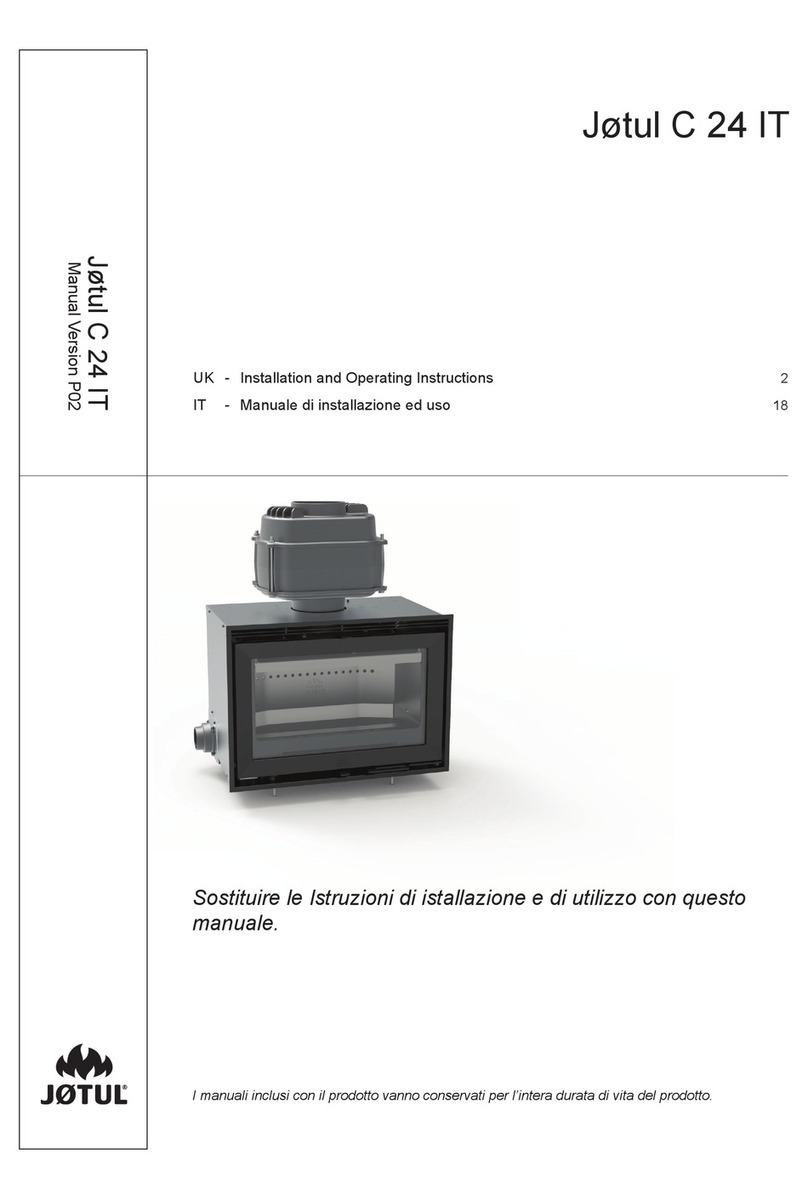4
1.0 Installation
If this solid fuel room heater is not properly installed a house fire
may result. For your safety, follow the installation directions.
Contact the local building or fire officials about restrictions and
installation inspection requirements in your area.
Reminder:
Your local officials have final authority in determining if a
proposed installation is acceptable. Any requirement, that is
requested by the local authority having jurisdiction, that is not
specifically addressed in this manual, defaults to NFPA 211, and
local codes in the U.S. or in Canada, CAN/CSA-B365-M and local
codes.
1.1 Assembly before installation
The Jøtul F 600 is shipped with the flue collar, gasketing and
hardware inside the stove.
• Toinstallthefluecollarinthetoporrearexitpositionremove
the tape from the gasketing and adhere to the groove on the
back of the stove around the flue opening.
• Placethefluecollaronthestoveinthetoporrearexitposition
and secure with the nut, bolt and washer.
• Thenutandwasherareplacedontheinsideofthestove.
1.2 Chimney connector
The chimney connector is a single walled pipe used
to connect the stove to the chimney. For use with the
Jøtul F 600, the chimney connector must be 6” in diameter, with
a minimum thickness of 24 gauge black steel.
• AluminumandGalvanizedsteelpipeisnotacceptableforuse
with the Jøtul F 600. These materials cannot withstand the
extreme temperatures of a wood fire and can give off toxic
fumes when heated.
• Do not use the connector pipe as a chimney.
• Eachchimneyconnectororstovepipe sectionmustbe
installed to the stove flue collar and to each other with the
male (crimped) end toward the stove. See figure 2, page 13.
• Thispreventsanyamountofcondensedorliquidcreosote
from running down the outside of the pipe or the stove top.
• Alljoints,includingthefluecollarconnectionmustbesecured
with three sheet metal screws.
• Forthebestperformancethechimneyconnectorshouldbe
as short and direct as possible, with no more than two 90°
elbows.
• The maximum horizontal run is 36”and a recommended total
length of stove pipe should not exceed 10 feet.
• Alwaysslopehorizontalrunsupward1/4”perfoottowardthe
chimney.
• Nopartofthechimneyconnectormaypassthroughanattic
or roof space, closet or other concealed space, or through a
floor or ceiling.
• Allsectionsofthechimneyconnectorsmustbeaccessiblefor
cleaning.
• Wherepassagethroughawallorpartitionofcombustible
construction is desired, the installation must conform with
NFPA 211 or CAN/CSA-B365, and is also addressed in this
manual.
• Do not connect this unit to a chimney flue servicing another
appliance.
2.0 Chimney Requirements
There are two types of chimneys suitable for the
Jøtul F 600:
1. A code- approved masonry chimney with a flue liner.
2. A prefabricated chimney complying with the requirements
for Type HT (2100°F) chimneys per UL 103 or ULC S629.
Thechimneysizeshouldnotbelessthanthecross-sectionalarea
of the flue collar, and not more than three times greater than the
cross-sectional area of the flue collar.
When selecting a chimney type and the location for the chimney
in the house, keep this in mind: it is the chimney that makes the
stove work, not the stove that makes the chimney work. This is
becauseachimneyactuallycreatesasuction,called“draft”,which
pulls air through the stove.
Several factors affect draft: chimney height,cross-sectional area
(size),andtemperatureofthechimney,aswellastheproximity
of surrounding trees or buildings.
As a result, a short masonry chimney on the exterior of a house
will give the poorest performance. This is because it can be very
difficult to warm the chimney thereby creating inadequate draft.
In extremely cold northern areas it may be necessary to reline the
chimney or extend its height to help establish draft.
Conversely, a tall masonry chimney inside the house is easier to
keep warm and will perform the best.
The following guidelines give thenecessary chimney requirements
based on the national code (ANSI-NFPA 211for the US. And CSA
CAN-B365 for Canada). However,many local codes differ from the
national code to takeinto account climate,altitude,or other factors.
Notice:
It is important that you check with your local building officials
to find out what codes apply in your area before installing your
new Jøtul F 600.
Remember: Your local inspector(s) have the final authority in
approving your installation.It is always best to consult with them
prior to the installation.
2.1 Masonry Chimneys
When installing the Jøtul F 600 into a masonry chimney you must
conform to all of the following guidelines:
• Themasonrychimneymusthaveafireclaylinerorequivalent,
with a minimum thickness of 5/8” and must be installed
with refractory mortar. There must be at least 1/4” air space
between the flue liner and chimney wall.
• Thefireclayfluelinermusthaveanominalsizeof8”X8”,and
shouldnotbelargerthan8”X12”.Ifaroundfireclaylineristo
be used it must have a minimum inside diameter of 6” and
not larger than 8” in diameter.
• Ifachimneywithlargerdimensionsistobeused,itshould
be relined with an appropriate liner that is code approved.
• Themasonrywallofthechimney,ifbrickormodularblock,
must be a minimum of 4” nominal thickness. A mountain or
rubble stone wall must be at least 12” thick.
• Anewly-builtchimneymustconformtolocalcodesandin
theirabsencemustrecognizenationalregulations. W h e n
using an existing chimney, it must be inspected by a licensed
professional chimney sweep, fire official, or code officer, to
ensure that the chimney is in proper working order.
USA/cAnAdA


